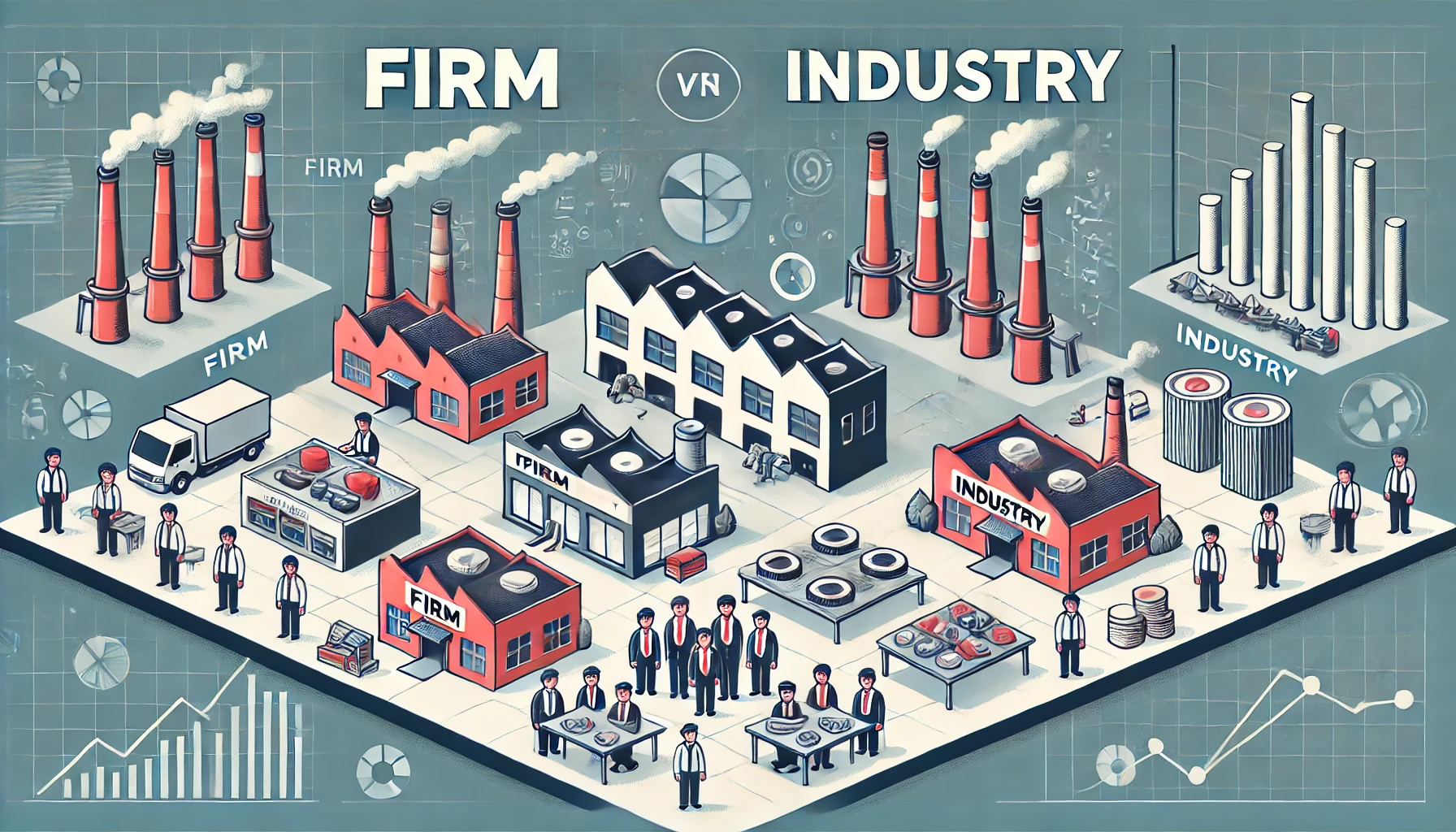Firm:
A firm is an individual business entity that produces goods or services for the purpose of earning a profit. It can be organized in various forms such as a sole proprietorship, partnership, corporation, or cooperative. The primary objective of a firm is to maximize profit by managing resources efficiently and responding to market demands.
Characteristics of a Firm:
- Production Unit: A firm is considered a basic unit of production in an economy. It combines various inputs like labor, capital, and raw materials to produce goods or services.
- Legal Entity: Firms are recognized as legal entities that can own property, enter into contracts, sue, and be sued.
- Profit Motive: While not all firms are for-profit (e.g., nonprofits), the majority aim to generate profit, which serves as a measure of their success and sustainability.
- Decision-Making: Firms make decisions about production levels, pricing, marketing, and investment to optimize their operations and achieve business objectives.
- Scale and Scope: Firms vary in size and scope, from small local businesses to large multinational corporations. They may operate in one or multiple industries.
Examples of Firms:
- A local bakery that sells bread and pastries.
- A multinational technology company that produces and sells electronic devices.
- A consulting firm that offers professional services.
Industry:
An industry is a group of firms that produce similar products or provide similar services. Industries are classified based on the primary type of goods or services they produce. The firms within an industry compete with one another and share common market characteristics.
Characteristics of an Industry:
- Common Product/Service: Firms in an industry offer similar products or services, making them competitors in the same market.
- Market Structure: Industries can have different market structures, such as perfect competition, monopolistic competition, oligopoly, or monopoly, based on the number of firms, market power, and barriers to entry.
- Regulations: Industries are often subject to specific regulations and standards, which can vary by country and impact how firms operate.
- Supply Chain: Industries typically have interconnected supply chains, where the output of one firm may serve as an input for another.
- Economic Indicators: Industries can be analyzed using various economic indicators, such as industry growth rates, market share, and profitability, to assess their performance.
Examples of Industries:
- Automobile Industry: Includes firms that manufacture cars, trucks, and other vehicles (e.g., Ford, Toyota).
- Healthcare Industry: Comprises firms that provide medical services, manufacture medical equipment, and produce pharmaceuticals (e.g., hospitals, pharmaceutical companies).
- Technology Industry: Encompasses firms that develop and sell electronic devices, software, and digital services (e.g., Apple, Microsoft).
Relationship Between Firm and Industry:
- Firms operate within industries and are influenced by industry-specific factors, such as competition, consumer preferences, and regulatory environment.
- The performance of an industry can impact the success of individual firms within it. For example, a booming technology industry may benefit tech firms, while a downturn in the industry could pose challenges.
- Firms contribute to the overall dynamics of an industry through innovation, competition, and strategic decisions, which can lead to industry growth or transformation.
Conclusion:
Understanding the concepts of firm and industry is crucial for analyzing economic activities and market dynamics. Firms focus on individual business strategies, while industries provide a broader context for competition and market trends.

